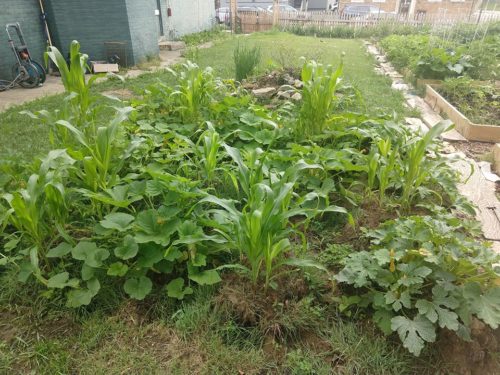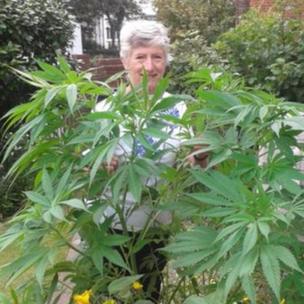We thought we might deviate from our normal fare and explore some of the more interesting aspects of cannabis culture. Let’s go over some urban legends and see if there’s any truth to them! A Growers Network special.

We wanted to continue a series on some of the funny or strange urban legends you might have heard around cannabis. Is there any truth to these legends? Or are they simply myths and somebody’s blowing smoke?
Let’s dive in!
Marijuana is a “Gateway Drug”
Here’s the basic premise posited by proponents of this legend: Somebody young tries cannabis and likes it. But over time, as they try it more and more, it starts to lose its edge, so they have to resort to gradually harder drugs to get the same “high” they used to get from weed.
At first glance, this argument might sound reasonable. After all, well-established psychology has shown that Habituation is a real thing. If you do something frequently enough, eventually it loses its novelty, and the effect it has decreases. For frequent smokers and alcohol users, this is true, and they have to resort to consuming more of their drug of choice to get the same effect.
Can you become habituated to cannabis?
Yes. It is true that frequent users of cannabis have to use more of it to get the same effect. Experienced users frequently recommend that new users do not try the same levels or amounts that they use, otherwise the experience could be extremely unpleasant.

A research paper from 1963 examined cannabis habituation (in a rather balanced way I might add), and came to the conclusion that cannabis can be “habit-forming” but not in the same way one might describe other drugs, thus creating a discrepancy between our normal usage of the word addiction and how it would be applied to cannabis.
But what about the jump to harder drugs?
This is where the logic of the original premise falls apart. For most drugs that people get habituated to, they simply use more of that drug. Alcoholics do not jump to using heroin, tobacco users do not suddenly jump to smoking crack cocaine.
In fact, in places that have legalized cannabis, there is evidence that hard drug users actually use cannabis to get off of said drugs. We mentioned this in an earlier article on How the Police Benefit from Cannabis Legalization, but a study that looked at legalization in Oregon and Washington found that alcohol use and other drug use declined when marijuana was legalized, while marijuana use rose. The authors of the study posited that drug users were substituting cannabis for other drugs, which is consistent with other studies they cited (DiNardo and Lemieux, 2001; Crost and Guerrero, 2012; Anderson et al., 2014; Kelly and Rasul, 2014).
So does marijuana as a gateway drug hold up?
Based on our research, no. Evidence suggests it may actually be an anti-gateway drug, helping users of harder drugs (particularly opiates and alcohol) reduce or cease their usage.
The US Government Created a Secret Weed Strain Called “G-13”
Conspiracy theories abound about the US Government and cannabis. Some are true, as we discovered in the last Urban Legends article. This one continues the conspiracy train and claims that a secret super-powerful strain of marijuana codenamed G-13 was created by the US Government. The legend goes that the CIA and FBI gathered the best strains of marijuana from around the world and bred them together to create the best strain ever. The “G” stands for government, and the “13” stands for the 13th letter in the alphabet, M (for marijuana).
Is there any evidence for this? Not that we can find. The legend is repeated in several places, but there are no primary sources we can find that even remotely mention such statements.
What’s more likely is that this was a form of early viral marketing for a real strain named G-13 in the 70s and 80s.
Multiple Presidents Have Smoked Cannabis
This one’s a pretty common urban legend passed around about multiple different presidents. Some of them have admitted to smoking weed in the past, but a lot of presidents were rumored to be users of the chronic. Let’s take look at what we can find:
- #1 - George Washington: Grew hemp at Mount Vernon, but no evidence for smoking cannabis. In a letter, he mentioned that female hemp plants were better due to being more productive.
- #2 - John Adams: A strong advocate for industrial hemp, and in a letter to the editors of the Boston Evening-Post, he wrote in the post-script about “want a world of Hemp more for our own consumshon.” The context implies that it’s for industrial purposes, but could easily be interpreted in a different manner.
- #3 - Thomas Jefferson: Grew hemp at his estate, but all quotes claiming he smoked cannabis have been unsubstantiated.
- #4 - James Madison: Reportedly claimed that hemp gave him the insight for writing the Constitution, but it’s likely he was referring to industrial hemp.
- #5 - James Monroe: According to “The Great Book of Hemp,” Monroe found hashish while serving as a diplomat to France, and smoked it throughout his life. Unfortunately, besides this book, I can’t find other sources to corroborate this statement.
- #7 - Andrew Jackson: Several websites claim that Andrew Jackson smoked with his troops, but I can’t find any records confirming this.
- #12 - Zachary Taylor: Several websites claim that Zachary Taylor smoked marijuana while serving during the Mexican-American war, but I can’t find records to confirm this.
- #14 - Franklin Pierce: In a letter to his family, Franklin Pierce is quoted as saying that the “only good thing” to come out of the Mexican-American war was his use of marijuana.
- #16 - Abraham Lincoln: There are no substantive records or quotes of him using cannabis. All quotations that have been asserted and used to claim he smoked don’t make sense chronologically.
- #35 - John F Kennedy: According to close family and friends, JFK smoked cannabis to deal with lower back pain. JFK supposedly used other drugs too.
- #39 - Jimmy Carter: Jimmy Carter advocated for the decriminalization of the plant, but no records of him using the plant exist.
- #42 - Bill Clinton: Bill Clinton publicly admitted to smoking marijuana once or twice, but he “did not inhale.”
- #43 - George W. Bush: While serving in office, Bush publicly denied using cannabis. However, after his service, he told his biographer that “I wouldn’t answer the marijuana questions. You know why? Because I don’t want some little kid doing what I tried.”
- #44 - Barack Obama: Obama has admitted publicly several times that he has smoked marijuana. When running for office in 2008, he even said, “When I was a kid, I inhaled, frequently. That was the point”
That’s the second part of our Urban Legends on Cannabis. We’ve got a few more up our sleeves for the next article, but if there’s anything you’d like to see, please let us know in the survey or on the forums!
10 Best Gift Ideas for Cannabis Connoisseurs and Growing Aficionados (2022)
December 7, 2022Developing and Optimizing a Cannabis Cultivation System
December 14, 2021Dealing with Insomnia: How Can CBD Help?
December 10, 2020Your Guide to Sleep and CBD
December 7, 2020
Do you want to receive the next Grower's Spotlight as soon as it's available? Sign up below!

Do you have any questions or comments?

About the Author
Hunter Wilson is a community builder with Growers Network. He graduated from the University of Arizona in 2011 with a Masters in Teaching and in 2007 with a Bachelors in Biology.















